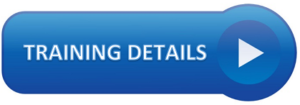Email Etiquette, in the Professional World; Tips for Communication
In todays era emails have become the backbone of communication. Despite the lack of face to face interaction and visual cues the importance of email etiquette cannot be emphasised enough. As Jane Anderson, a renowned communication specialist states “A skilled professional is not about what they say but also how they express it in writing.”
Learning the Art of Email Etiquette
Email communication goes beyond typing and clicking. It requires a blend of eloquence, precision and professionalism from those who understand its impact. Emails serve as the lifeline of workplaces by facilitating information exchange, collaboration and decision making. With professionals spending a portion of their workweek on emails it becomes crucial to master email etiquette for interactions and efficient operations.
Points for Email
- Clarity, in Intent; Effective emails have a purpose to avoid any confusion or misunderstandings.
- Begin your email by stating the objective briefly. Identify the individuals involved and determine if email is the communication method.
- Remember that professionals value brevity so make sure to be concise while still maintaining clarity and getting straight to the point.
- A organised email reflects professionalism. Craft a subject line start with a greeting and end with a respectful closing.
- When emailing someone, from another organisation introduce yourself clearly. Provide context if necessary whether you are familiar with them or not.
- Maintain a appearance by sticking to established templates and using a consistent style. Avoid using fonts or colors.
- Before sending attachments double check them for accuracy. If the files are large consider using cloud storage to avoid burdening recipients with downloads.
- Always maintain a tone in your emails. Use language that avoids any undertones for effective communication.
- Ensure that your email does not contain any undertones or outbursts as they have no place, in professional correspondence.
- When dealing with information exercise caution and discretion to uphold confidentiality.
- Please avoid sharing any information via email and make sure to verify the recipients before sending.
- To ensure clarity it is important to conclude emails, with a statement about the steps. This will eliminate any ambiguity. Help facilitate follow up.
- Maintaining grammar is crucial as errors can undermine credibility. Use Spell check tools to ensure content. Proofreading is not a luxury but a necessity.
- To manage the influx of emails it’s helpful to set time slots for email management. Organise your emails using labels, folders and reminders.
Understanding email etiquette is the quintessence of professionalism. It goes beyond communication and fosters trust, respect and effectiveness in interactions. In a world where visual cues are absent, emails serve as mirrors reflecting the senders expertise, courtesy and commitment to excellence.
As Jane Anderson aptly puts it “In the realm written words are the brushstrokes of professionalism.” The professional world is, like a canvas painted with words. Those who wield their language skills masterfully create communication masterpieces. Establish themselves as paragons of excellence.
If an email will take a while to address, give them a heads-up. They’ll appreciate it
Strategies, for Enhancing Email Communication; Take Your Game to the Next Level
In the world of communication emails serve as the crucial threads that weave together collaboration decision making and relationship building. Mastering the art of sending emails is more than a skill; it reflects your professionalism, courtesy and strategic acumen. Lets explore some expert strategies that go beyond the ordinary giving you an advantage in the realm.
- Create an Engaging Subject Line; The subject line is like a doorway into your email. Make it captivating and reflective of its content. A crafted subject line sets expectations for the recipient. Increases the likelihood of your email being opened promptly.
- Timing Matters; When it comes to emails timing plays a role. Sending messages during business hours enhances the chances of receiving responses. However, be mindful of peak times when inboxes are flooded; sending emails then might result in your message getting lost amidst the influx.
- Personalisation Holds Key Importance; Addressing recipients by their names. Referencing interactions or shared experiences can establish a connection and showcase your commitment, to meaningful correspondence.
- Clear and Concise Communication; Professionals often have time; therefore brevity is highly valued.
- To save time for both you and the person receiving your email it’s important to get to the point while ensuring clarity.
- Since mobile devices are widely used for reading emails it’s essential to make sure your emails are mobile friendly. Avoid paragraphs and excessive formatting that can be difficult to read on screens.
- Make sure the purpose of your email is explicitly stated, leaving no room, for confusion. Clearly communicate what action you expect from the recipient so they know how to respond
- While emojis can add a touch use them sparingly and thoughtfully in communication. Keep in mind that they may be misinterpreted so make sure their usage is relevant and appropriate.
- Maintaining professionalism is crucial so take the time to proofread your email for any typos or grammatical errors. You may also consider using grammar checking tools to ensure a product that reflects your attention to detail.
- When making a request from the recipient emphasize how complying with your request will benefit them or align with their objectives. Highlighting the value they will receive increases the likelihood of a response.
- Since tone can easily be misconstrued in written communication, without verbal cues it’s important to use neutral and courteous language throughout your email.
- If there is a possibility of the message being misunderstood it is advisable to adopt a tone.
- Thoughtful Attachments; Make sure that any attachments you include are relevant and clearly labeled. Provide some context, about the attachment in your email so that the recipient knows what to expect.
- Respecting Response Time; Be mindful of varying response times depending on the urgency of the matter. If your email requires a response make it clear and explicit.
- Avoid Excessive Follow ups; While follow up emails are important try not to be overly persistent. Give the recipient time to respond before sending a follow up email.
- Avoid Overusing Jargon; Remember that not everyone may be familiar with industry terms or acronyms. Strive for clarity and accessibility, in your communication especially when interacting with audiences.
- Respect Your Email Signature; Treat your email signature as your business card. Keep it professional and comprehensive including your name, job title, company details, contact information and any relevant social media profiles.
- Graceful Unsubscription; If your email is part of a mailing list ensure that there is a way for recipients to unsubscribe if they wish to do. Respecting their preferences enhances your credibility. Many people need a one click unsubscribe. Make it easy and they wont complain.
- Ensure Data Confidentiality; When sharing information it is recommended to use encryption services to maintain confidentiality and safeguard the data from the wrong access. You can add security codes to zip files, make other files view only or restrict access.
- Consider the Importance of “Reply All”; Exercise caution when using the “Reply All” function. Only employ it when every recipient genuinely requires the information being shared. It really shouldn’t be used unless approved by your organisation.
- Reflect Before Sending; Prior to sending any email take a moment to pause and review its content. Check your tone, especially if you are in a mood or angry. Ensure that your message aligns, with your intended purpose and conveys the tone. Once an email has been sent there is no way to undo it.
- Continuously Learn and Adapt; Email communication is ever evolving. Stay updated on practices. Consider the preferences of your recipients. Adjust your approach accordingly to align with changing norms.
In communication emails provide an opportunity for you to showcase your expertise, courtesy and strategic thinking skills. By including these strategies into your emails you can create messages that not resonate but also yield meaningful outcomes. Remember that each email serves as a chance for you to demonstrate proficiency while respecting the time and attention of your recipients.

David Alssema is a Body Language Expert and Motivational Speaker. As a performer in the personal development industry in Australia he has introduced and created new ways to inspire, motivate and develop individuals.
David Alssema started his training career with companies such as Telstra and Optus Communications, and then developed Neuro-Linguistic Programming (NLP) within workplace training as principal of Paramount Training & Development.
As an author/media consultant on body language and professional development David has influenced workplaces across Australia. He contributes to Media such as The West Australian, ABC Radio, Australian Magazines and other Australia Media Sources.







